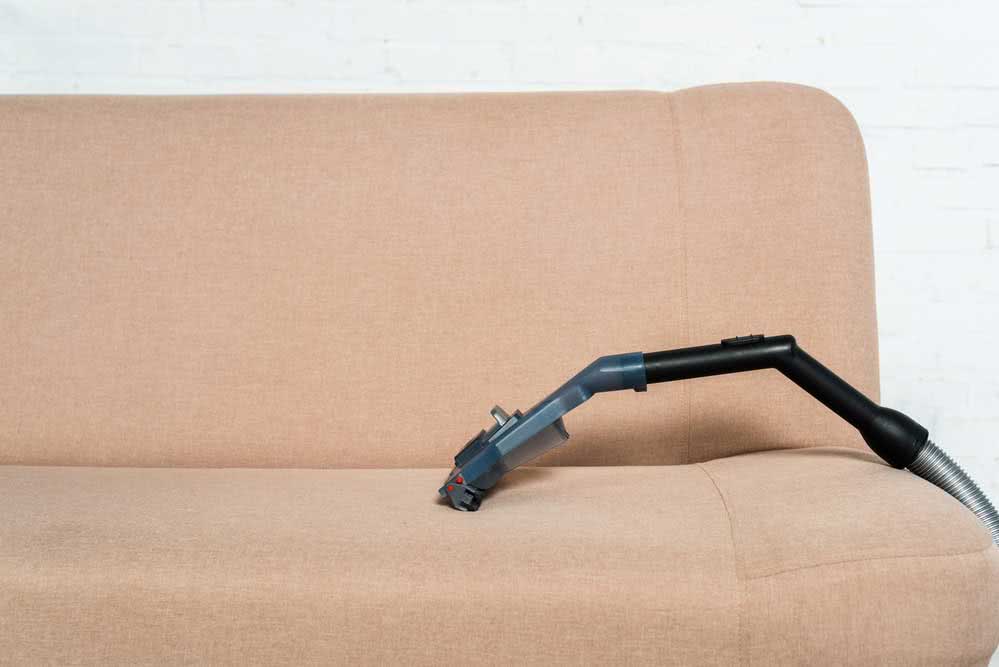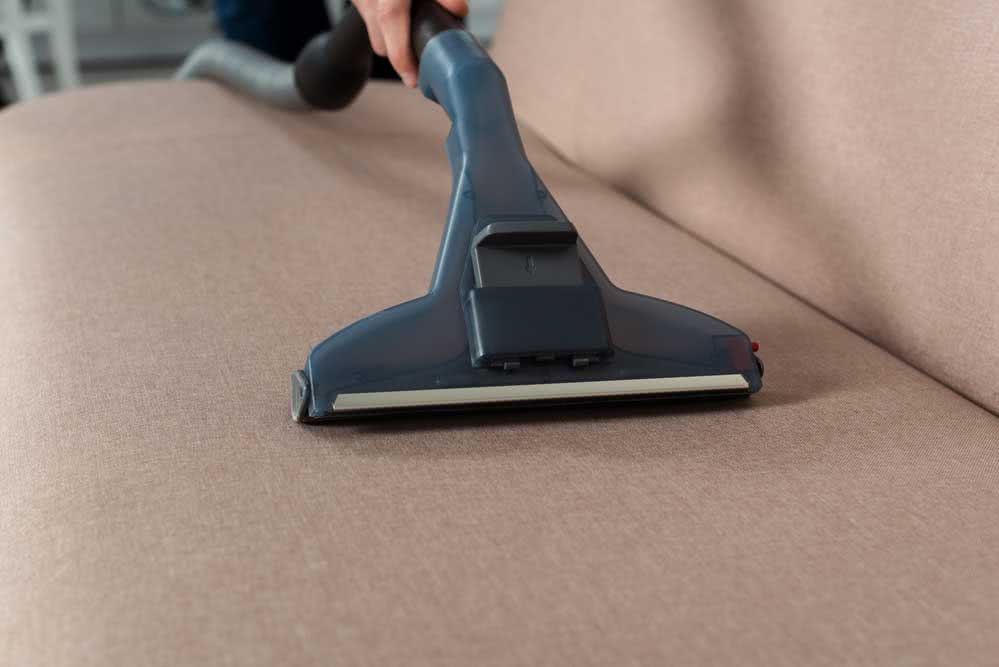Stains, bad odors and thousands of mites. All of that can be right now, right now, right there on your couch. And do you know the best way to get rid of all this dirt? Cleaning the sofa.
But calm down! Despite the name, the process is simple and, depending on the situation, you can do it yourself. Just take a look at the tips below.
Importance of Sofa Sanitation

End bad smell
Over time, it is very common and natural for the sofa to absorb unpleasant odors, especially if you have pets at home or if you have ever spilled liquids on the upholstery.
And, let’s face it, it’s no good lying down on a smelly sofa, is it? That’s why cleaning is so important, since through this process it is possible to eliminate the cause of the bad smell, instead of just making up or disguising it with products or homemade recipes.
Eliminate mites, fungi and other microorganisms
Contact with human skin and animal hair makes the sofa the perfect habitat for the proliferation of mites.
And those who have allergic rhinitis know how these little creatures can be harmful to health.
Fungi are another type of microorganism common to appear on the surface of sofas, especially if your home is more humid and poorly ventilated.
The best way to eliminate these microscopic agents is by cleaning the sofa.
Take care of the family’s health
Sofa cleaning eliminates mites, fungi and other harmful microorganisms, as you saw in the previous topic, and this directly impacts the health of the whole family.
Therefore, cleaning the sofa is also very important from the point of view of quality of life and well-being.
Preserve the sofa longer
A clean and sanitized sofa keeps for much longer, that is, you extend the useful life of this good that probably cost dearly.
This is another good reason to invest in cleaning your upholstery.
Care when cleaning the sofa
- Pay attention to the type of fabric on your sofa. That’s because some types must be dry-cleaned, while others can’t even come close to steam cleaning, for example.
- The products used in cleaning and sanitizing upholstery are also important. Avoid bleach, chlorine, and bleach that can fade fabric fibers. Products such as washing powder are not indicated either, as they tend to cause stains. Ideally, use coconut soap that is neutral and mild, but still only after making sure your upholstery can receive this type of product.
- Sponges and hard bristle brushes should be avoided so as not to damage the fabric. The correct thing is to sanitize with soft sponges and without using pressure to clean.
- Today there are dry cleaning foams that facilitate the cleaning process. Before using, however, check the information on the label and see if it fits your type of upholstery.
- The complete cleaning of the sofa must be carried out once a year, on average, and may vary according to the use made of the upholstery. Maintenance cleaning between one cleaning and another can be done weekly with a vacuum cleaner.
- Remembering that vacuuming should be carried out slowly so as not to raise dust and that all parts of the sofa need to be cleaned, including the back. When vacuuming, use the vacuum in the direction of the fabric fiber and only after the first pass you can vacuum in the opposite direction.
- Beware of homemade recipes, especially those based on hydrogen peroxide. This substance damages suede and suede fabrics.
How to clean a sofa

You can choose to do the cleaning of the sofa on your own or, then, resort to a company that specializes in this type of service.
Both options are valid, but it is important to emphasize that if your sofa is very dirty and with stains difficult to be removed, the ideal is that you hire a specialized service.
Among all the sofa cleaning options, the most suitable and the one that best adapts to different types of upholstery is dry cleaning.
Check out below how you can sanitize the sofa in the best “do it yourself” style.
Step 1: Start by applying dry cleaning foam all over the upholstery with the help of a soft sponge.
Step 2: Brush the sofa with a soft bristle brush and wait for the foam to completely disappear from the fabric.
Step 3: The next step is to remove the foam and dirt with a slightly damp cloth. Repeat the process if you still notice traces of the product on the sofa.
Step 4: With a dry cloth, remove excess moisture from the sofa.
Step 5: Then, just keep the sofa in a place with good ventilation and lighting for it to dry naturally.
Got any questions? See the step-by-step video below:
How much does sofa cleaning cost

But if you choose to do the sofa cleaning with a company, that’s fine too!
In this case, the first step is to look for references about the company to make sure that it really provides a good service.
Sofa cleaning price varies according to the upholstery size. On average, for dry cleaning of a sofa with two or three seats, the cost varies between R$170 and R$250.
For a retractable sofa, the amount charged is, on average, R$ 200. The corner sofa can cost a little more, with values starting at R$ 250.
Another option for those who want to sanitize the sofa is to rent the equipment used for cleaning, in this case a cleaning extractor machine. There are companies that make this type of loan and the cost is usually lower than contracting a full service.
However, it is worth remembering that in this case you are the one who does all the work. The company only rents the equipment.
Now that you know the different ways to clean the sofa, just choose the one that best suits your needs and you’re done! Clean sofa again!



